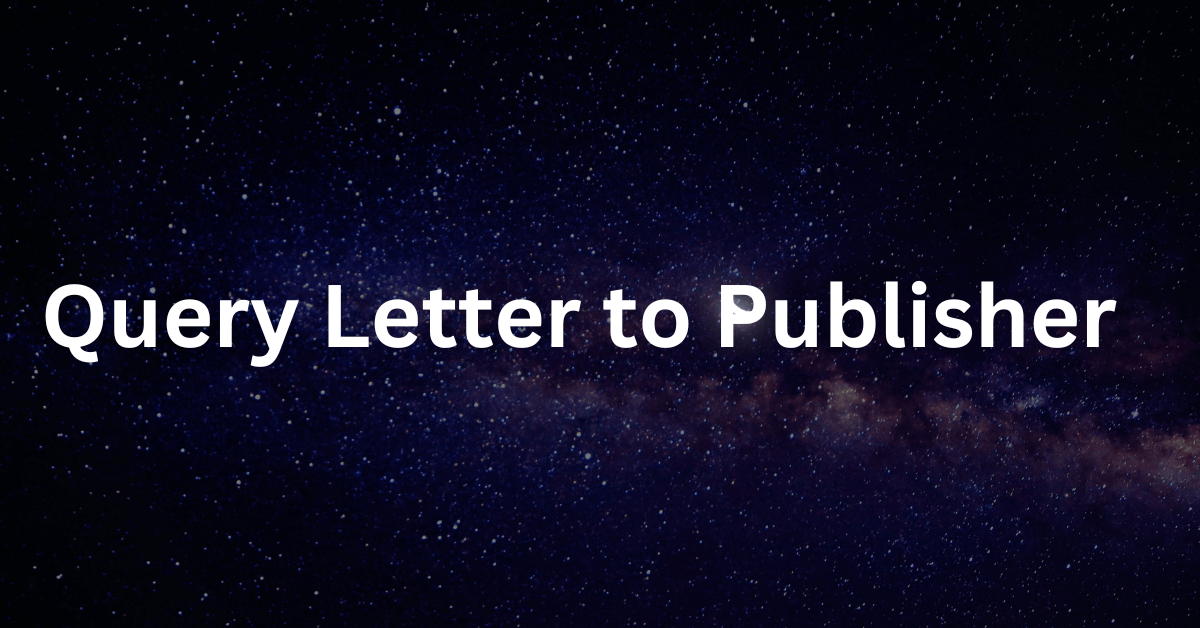A query letter to a publisher is a vital tool for writers seeking to get their work published. It serves as a formal introduction, outlining the manuscript’s key details and enticing the publisher to request more. In essence, it’s a writer’s pitch to a publisher, aiming to capture their interest and persuade them to take a closer look at the manuscript.
In this article, we’ll provide you with templates and examples of query letters to publishers. These samples are designed to help writers craft compelling letters that effectively showcase their work and increase their chances of getting published. Whether you’re a seasoned writer or new to the publishing world, our examples will guide you through the process of writing a persuasive query letter.
Our goal is to make the process of writing a query letter to a publisher as simple and straightforward as possible. By providing you with these templates and examples, we hope to empower you to confidently approach publishers and present your work in the best possible light.

Sample of a Query Letter to Publisher
[Your Name]
[Your Address]
[City, State, ZIP Code]
[Email Address]
[Phone Number]
[Date]
[Publisher’s Name]
[Publisher’s Address]
[City, State, ZIP Code]
Dear [Publisher’s Name],
I am writing to inquire about the possibility of publishing my manuscript with [Publisher’s Name]. I believe that my work aligns with your publishing interests and would be a valuable addition to your catalog.
My manuscript, titled [Title of Manuscript], is a [Genre of Manuscript] novel that explores themes of [Themes of Manuscript]. It follows the story of [Brief Summary of Manuscript]. I have enclosed a synopsis and the first three chapters for your review.
I am confident that my manuscript will resonate with your readers and would be a strong addition to your list. Thank you for considering my work. I look forward to hearing from you soon.
Sincerely,
[Your Name]
How to Write a Query Letter to Publisher
Writing a query letter to a publisher can be a daunting task, but with the right approach, you can increase your chances of getting noticed. Here are seven steps to help you craft a compelling query letter:

Research the Publisher:
Before you start writing, research the publisher to ensure they are the right fit for your manuscript. Look at their submission guidelines, past publications, and areas of interest.
2. Craft a Strong Opening:
Start your letter with a strong opening that grabs the publisher’s attention. Mention any relevant credentials or accolades, and briefly introduce your manuscript.
3. Summarize Your Manuscript:
Provide a brief summary of your manuscript, including the genre, word count, and main themes. Highlight what makes your manuscript unique and compelling.
4. Include a Brief Bio:
Briefly introduce yourself and your writing background. Mention any relevant experience or qualifications that make you suitable to write this manuscript.
5. Outline Your Marketing Plan:
Publishers are interested in authors who can help promote their work. Outline your marketing plan, including any ideas you have for promoting your book.
6. Close Professionally:
Close your letter by thanking the publisher for their time and consideration. Provide your contact information and mention that you are open to sending them more material if they are interested.
7. Proofread Carefully:
Before sending your query letter, proofread it carefully to ensure there are no typos or grammatical errors. A well-written and error-free letter will make a positive impression on the publisher.
By following these steps, you can write a compelling query letter that effectively communicates the value of your manuscript and increases your chances of getting published.
FAQs about a Query Letter to Publisher
When writing a query letter to a publisher, it’s common to have questions about the process. Here are some frequently asked questions and their answers:
1. What is a query letter to a publisher?
A query letter is a formal letter sent to a publisher to pitch a manuscript for publication. It provides a brief summary of the manuscript and aims to persuade the publisher to request more material.
2. What should I include in a query letter?
In a query letter, you should include a brief summary of your manuscript, information about yourself as an author, and any relevant credentials or experience. It should be concise and compelling.
3. How long should a query letter be?
A query letter should be no longer than one page. It should be clear, concise, and to the point, highlighting the key aspects of your manuscript and why it would be a good fit for the publisher.
4. Do I need to have a finished manuscript before querying a publisher?
While some publishers may accept queries for unfinished manuscripts, it is generally advisable to have a completed manuscript before querying. This allows you to provide the publisher with a full picture of your work.
5. What should I do if I receive a rejection from a publisher?
Rejections are a common part of the publishing process. If you receive a rejection, don’t be discouraged. Use it as an opportunity to improve your query letter and manuscript, and continue submitting to other publishers.
By understanding the basics of query letters and how to approach publishers, you can increase your chances of success in the publishing world.
RELATED:
Validation Letter to Collection Agency
Letter to Spouse to Save Marriage
